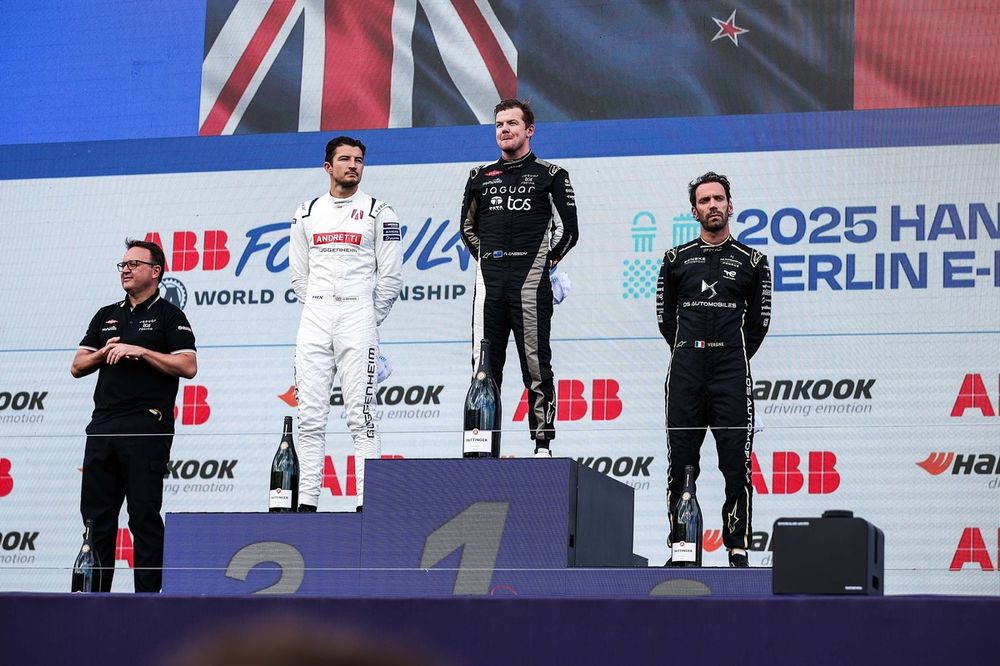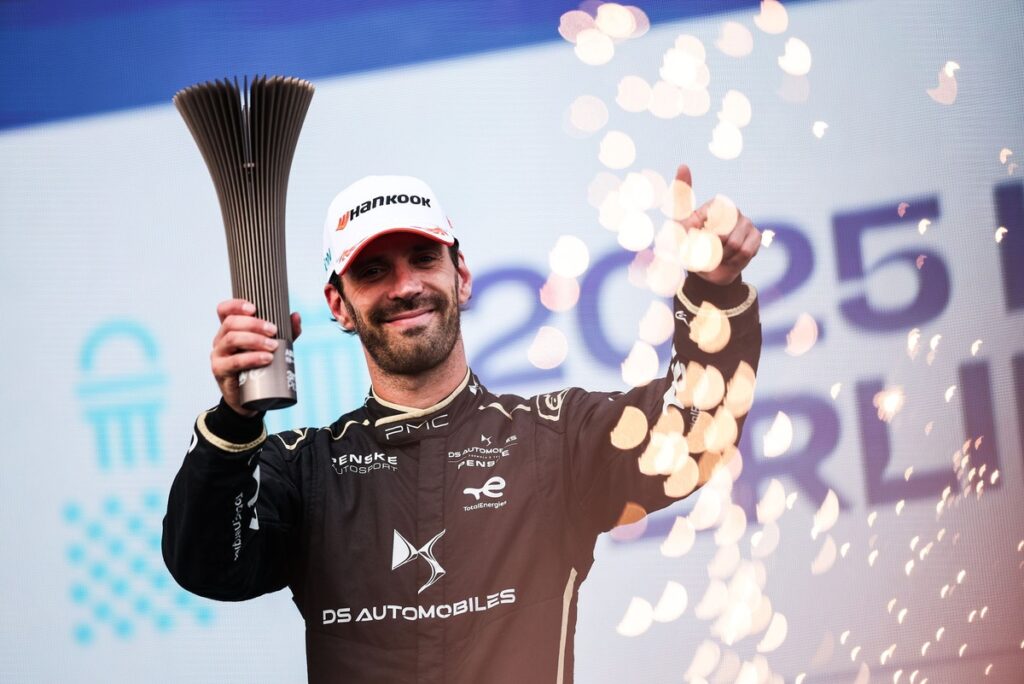Holding third in the championship in Germany, the Franco-American team’s goal was to maintain its position. The goal was achieved thanks to the exceptional performance of Jean-Eric Vergne, who finished third after starting from 18th on the grid.
On this second day on the historic Tempelhof Airport circuit in Berlin, the Formula E World Championship first had to contend with low, rain-laden skies. So much so that the third practice session – the only one of the day – started 40 minutes late, before being cut short by a red flag following Lucas di Grassi’s crash in his Lola Yamaha Abt. Unlucky the day before, after suffering a suspension failure (common to all cars), Vergne returned to the track cautiously and set the eighth-fastest time.
His team-mate Maximilian Guenther, racing in front of his home crowd, placed his DS E-Tense FE25 in fifth position, hoping that the weather conditions would calm down for the rest of the day.
Qualifying finally went ahead as planned, with the sky stabilising. The two DS Penske drivers found themselves together in Group A, on a wet track where water spray from the cars made visibility difficult. On this short and tricky track, every mistake is costly, but at the start of the session there were no problems to report. One by one, the various protagonists climbed to the top of the timesheets.
Maximilian Guenther, DS Penske
Photo by: DPPI
However, as the group began its final flying lap – the one that usually sets the benchmark time – a crash involving a Maserati caused a red flag and stopped the clock with 54 seconds remaining. Under these truncated conditions, Guenther and Vergne finished fifth and ninth respectively, without really being able to exploit the full potential of their DS E-Tense FE25s. This meant 13th and 18th places on the starting grid for the two DS Penske drivers.
A smart race pays off for Vergne, bad luck for Guenther
The weather remained mild at the start, with the track perfectly dry. This time, the race was scheduled for 38 laps (compared to 39 the previous day), forcing the teams to rethink their energy strategies, especially as there were no mandatory pitstops (Pitboost) for recharging in this second race of the weekend. The start went off without incident. The width of the track and the grip allowed several cars to attack the first corner side by side.
Both DS cars got off to an excellent start, with Vergne gaining four positions in just two laps. Starting 18th, the Frenchman then moved into the top 10 before the halfway point of the race. An initial check of the energy available for each car revealed that the two DS E-Tense FE25s were among those with the highest remaining charge levels.
Shortly after the halfway point, following a safety car intervention, they were in eighth and 12th positions. Guenther took advantage of this to also move into the top 10. After another neutralisation, several drivers activated their first Attack Mode. Vergne was the first of the two DS cars to do so, allowing him to quickly move back into the top five and then take the lead.

Podium: Race winner Nick Cassidy, Jaguar TCS Racing, second place Jake Dennis, Andretti Formula E, third place Jean-Eric Vergne, DS Penske
Photo by: DPPI
Unfortunately, Gunther was not as successful. While in seventh place, he was forced to retire due to a failure of a part common to all the cars in the championship, located in the front electric motor. The end of the race remained eventful, and Vergne drew on all his experience to cross the finish line in third place, a remarkable result considering his starting position.
After a rookie test scheduled for Monday 14 July in Berlin to evaluate young drivers, Formula E will head to London for the grand finale. This will be an opportunity for DS Penske to consolidate its position at the end of a positive season.
In this article
Be the first to know and subscribe for real-time news email updates on these topics
Subscribe to news alerts
Read the full article here

